




Overview of Hydropower
The word ‘Hydropower’ has something to do with water and power. The other name for hydropower is water power. Hydropower is the total use of falling or running water to produce electricity. Now, the electricity manufactured in this situation helps to power huge machines. On the other hand, hydropower is achieved by converting the gravitational or kinetic energy of water. Yes, now this is getting exciting, isn’t it?
When studied in dept hydropower have a huge family. But, surely, we won’t go that deep for the kids. Further in this article, we will talk about hydropower plants, what is hydroelectricity and how it can be generated, and much more.
What is Hydroelectricity?
Hydroelectricity is, again, something to do with electricity and power. People have been using this energy for more than 1000 years now. Hydroelectric is where electricity is generated from a hydropower plant. Hydropower is so useful that it supplies one-sixth of the world’s electricity. Electricity or any other power is generated through the hydro power plant. Hydropower is also known as hydel energy, and it is renewable.
Hydroelectric energy is renewable energy. This means this energy can again be created and used for various purposes. The Three Gorges Dam, located in China, is one of the largest hydroelectricity dams in the world. This 607 feet tall dam produces 22,500 megawatts of power for the country. The top producers of hydroelectricity in the world are the United States, Canada, India, Brazil, and Russia. These countries produce around 71% of all the renewable energy in the world.
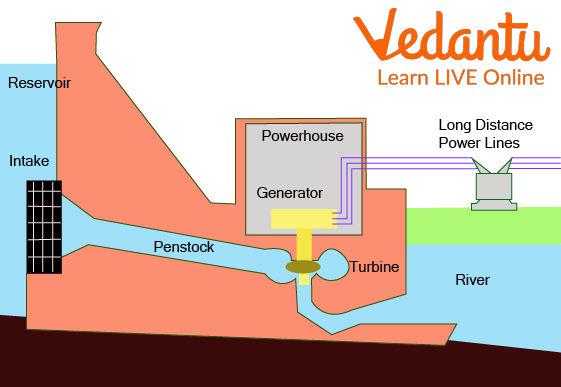
Hydroelectric Power Plant
How to Produce Hydroelectricity?
The base of producing hydroelectricity requires hydropower. So, we need to produce hydropower first, which will result in producing hydroelectricity. Hydroelectricity is mostly produced by using a dam or diversion structure to alter the flow of water bodies. Hence, Hydropower needs a constant recharging system so the water can produce electricity.
Interestingly, there are various types of hydropower facilities from where one could produce hydroelectricity. Other hydropower facilities are mostly powered by kinetic energy that makes the water move downstream. Standard hydropower utilises various turbines and generators to convert kinetic into electrical energy. On the other hand, this is also known as hydro energy.
The plants are located near water bodies or any water source to generate hydroelectricity. The energy collection from the moving water will highly depend on the density level of the water. So, the greater and more powerful the flow of water, the greater the collection will be. The water will flow through a pipe which will spin a turbine. Now, that will, in turn, spin a generator, and ultimately it will produce electricity.
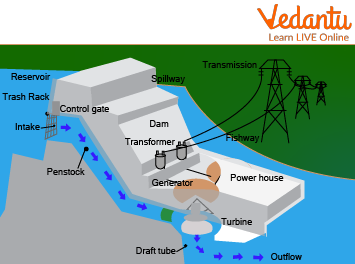
Hydroelectricity Produced by a Dam
Hydro Power Plant
By now, one surely has a little idea of a hydro power plant. These are where water energies are produced. Such plants consist of various materials that further help generate electricity for households, businesses, factories, and many more. The three basic hydropower facilities are impoundment, diversion, and pumped storage.
Impoundment Plant
Impoundment plants are the most common type of hydroelectric plant used worldwide. The impound facility present inside these plants has a large hydropower system. This hydropower system uses a dam to store water in a reservoir. After it is stored the water inside is released from the reservoirs and flows to the turbine. The water flowing to the turbine helps it to spin and ultimately produces electricity.
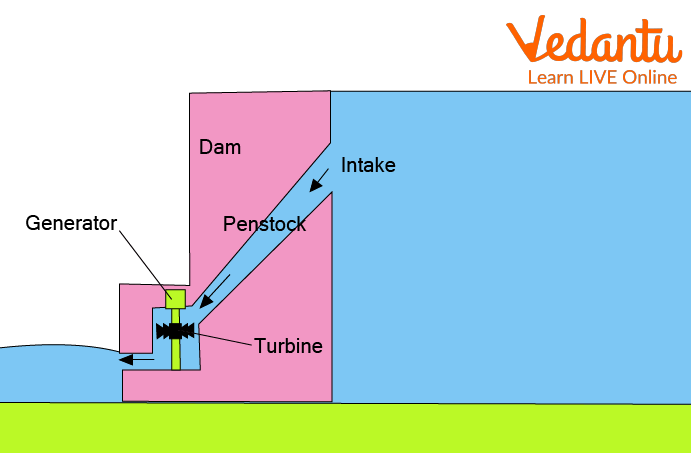
Impoundment Plant
Diversion
Diversion plants are also called ‘run-of-water’. This facility channels a portion of the river through a small canal. That becomes the natural decline of the river bed elevation to produce hydroelectric energy. In this system, a closed conduit channels the flow of water to the turbine with water flow. Now, the water flow is regulated by either gates, turbines, or valves. In this case, a diversion plant may not require a dam.
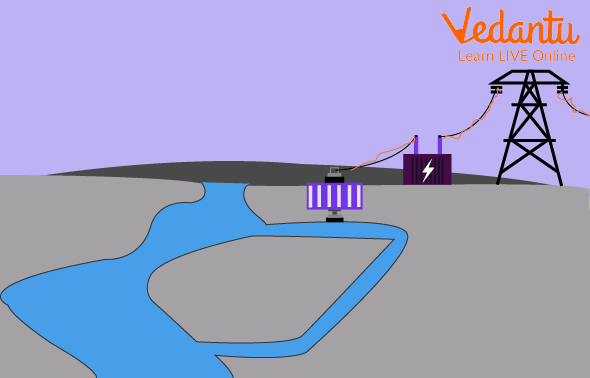
Diversion Plant
Pumped Storage Plant
Pumped storage is another simple type of hydropower plant. This plant works with the help of a giant battery. Such a plant is able to store all the electricity gained by other power sources. Other power sources include almost every natural source, such as wind, solar, and nuclear. This unit of plant stores energy by pumping water from reservoirs that are located at a lower elevation to a reservoir located at a higher elevation.
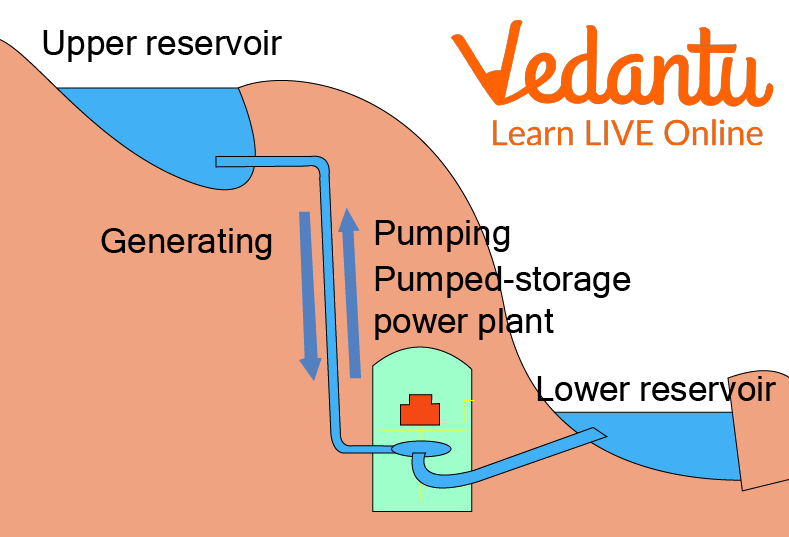
Pumped Storage Plant
Summary
Renewable resources have become quite important for the daily world to run. Without hydel energy, the world will have to face a lack of electricity. In that case, the natural water bodies present in this world are very important in some way or the other. If they are damaged, then there will be no production of hydroelectricity. Now that we know what hydro energy is, we will be able to solve many theories based on hydroelectricity. Hydroelectricity is a very important source of energy; it is also a renewable source of energy.
FAQs on Hydropower for Kids
1. Is tidal energy renewable or non-renewable?
Tidal energy is a renewable resource.
2. What are the uses of tidal energy?
The three common uses of tidal energy are mechanical crushing, storing energy, and gravitational hydropower.
3. What is the disadvantage of hydro energy?
The one major disadvantage of using hydro energy is it may cause low dissolved oxygen levels in the water.









